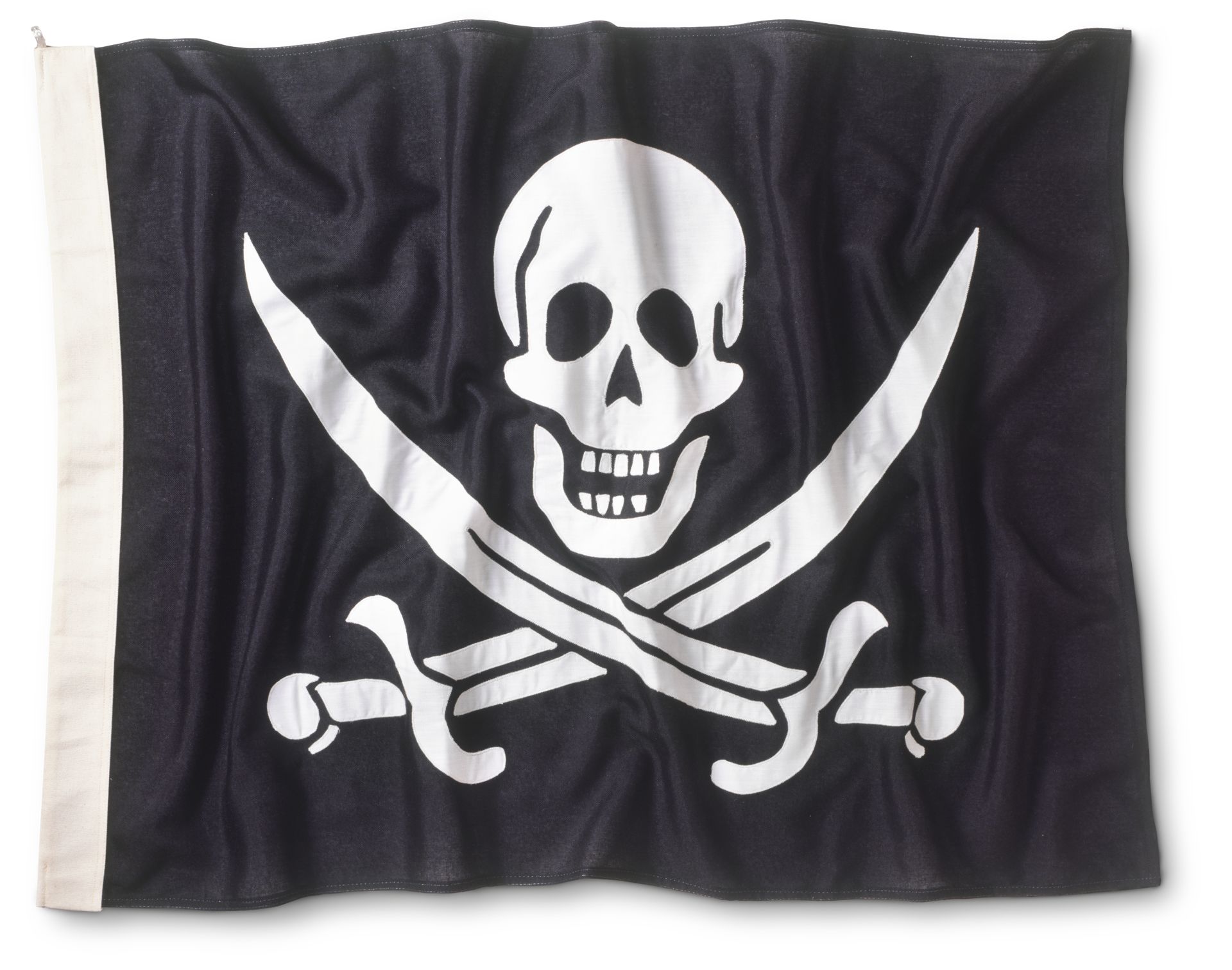The Jolly Roger Flag

Jolly Roger
For the crew of any eighteenth century sailing ship heading across the Atlantic Ocean, the most fearsome sight possible was the appearance of a pirate ship on the horizon. With the Jolly Roger flying defiantly from their mast, the pirate's intent was clear. Their aim was simple - capture the ship, capture or kill the crew and steal the cargo.
Piracy on the high seas was not new. Pirates had operated in the Mediterranean Sea from Roman times. The eighteenth century, however, was the golden age of pirates. Ships returning laden with gold and treasure from South America were tempting targets.
Flying the Jolly Roger marked the pirates' ships out from other, law abiding vessels. The Jolly Roger that we all know and recognize is a black flag with a white skull and crossbones design. The first mention of this design being used by pirates dates from 1687 to mark their land-based lairs. The French pirate Emmanuel Wynn is supposedly the first pirate to use the flag on board a ship.
The use of the flag soon became widespread, with John Quelch using it in 1703. He used the term 'Old Roger' for the flag, probably to reinforce the fear that pirates struck wherever they sailed. Gradually the skull on the flag adopted a grin, and this might be why the flag became known as the "Jolly" Roger.

By the 1720s, the name Jolly Roger was in regular use, with two pirates - Bartholomew Roberts and Francis Spriggs - using it for their flags. Both their flags were plain black, which suggests that the name was applied to any pirate flag.
Edward England and Sam Bellamy - known as 'Black Sam' - were known to use a black Jolly Roger with a skull and crossbones design. It is thought that Blackbeard, perhaps one of the most fearsome of the pirates of the Golden Age, also flew a Jolly Roger. There is only one reference to Blackbeard's use of flags, and they are there described as 'black' with a 'death heads' on them.
It is not clear how the skull and crossbones symbol came to be adopted on pirate flags. Way back in the thirteenth century the Knights Templar and later the Knights of Malta used a skull and crossbones symbol. Corsairs that operated along the Mediterranean Coast right up to the nineteenth century also flew a skull and crossbones symbol.
In the Golden Age of Piracy many pirate ships would try to fool their prey by flying the flags of friendly nations. When they sailed close enough, they would then raise the Jolly Roger to show that they were about to attack the ship. If the ship surrendered they would only be boarded. If they resisted, however, the black flag would be lowered and replaced with a red version. The crew of the target ship knew that no quarter would be given - it would be a fight to the death.
Pirates were often ruthless, cruel and single-minded in their pursuit of treasure. They also were capable of kidnap to gain ransoms and attacks on coastal communities where they could capture slaves and plunder churches and the homes of the wealthy. The Jolly Roger struck fear into the hearts of all who saw it flying on a ship. Its reputation was enough, with ships surrendering without a shot being fired.
Shop for more military products and gifts at these pages:
Challenge Coin Nation Morale Patches
Challenge Coin Nation Custom Morale Patches
Challenge Coin Nation Stock Morale Patches
Challenge Coin Nation Officially Retired Morale Patch
Challenge Coin Nation Challenge Coins
Challenge Coin Nation Stock Challenge Coins















Leave a comment